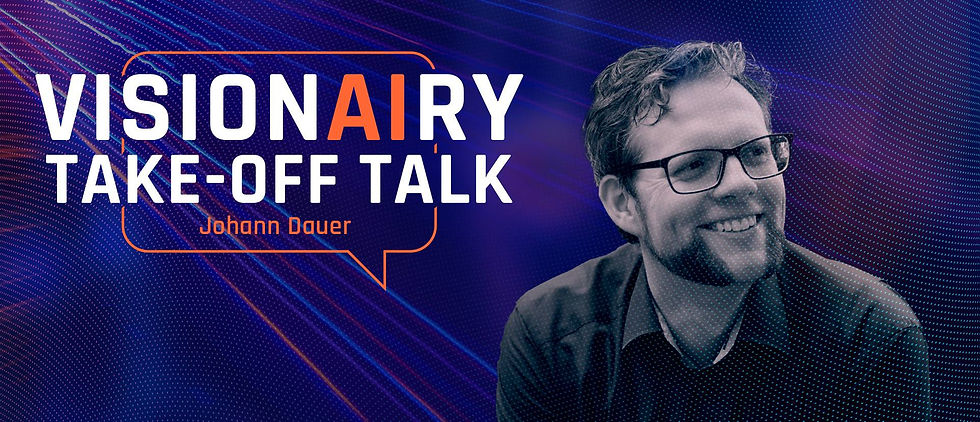VISIONAIRY® EXPERT TALK with Daniela Richter, Windrove Hamburg
- janhartmann6
- Dec 8, 2022
- 3 min read

1) What is Windrove’s work like in Hamburg? What is its significance for the drone location in Germany and Europe?
Our daily work actually consists a lot of connecting people from the drone economy with each other. In the Hamburg metropolitan region alone, for example, there are many innovation projects that deal with U-Space, vertiports, automation or defense, so that an exchange among each other is always fruitful. As a network, we are a neutral contact for the community and support them with our know-how and contacts. On the other hand, we support the city of Hamburg on its way towards drone regular operations. Together with the other German and European UAM model cities, we want to be a role model, pass on our experience and tackle challenges such as regulation or social acceptance. This is visible far beyond European borders and helps develop the industry worldwide.
2) What do you think it will take in the next few years for drones to become an integral part of our everyday lives?
For drones to really become a helpful, economically and ecologically sustainable part of our everyday lives in the future, the necessary acceptance among the general public is needed. New technologies always have to overcome reservations first. This can only happen if we make the benefits of drone applications tangible, but also minimize potential risks and adverse effects. This is another reason why it is particularly important to implement real-lab projects. In this way, research & development comes out from behind closed doors and becomes visible in the public sphere.
Another success factor for efficient flight operations is certainly the advancing automation in flight control. The implementation of U-Space as an integrated airspace is also a prerequisite for flying efficiently and safely in an expected high volume of drone traffic.
3) What role do you think safe software applications and AI-based solutions play in the success of the industry?
For the industry to develop from a niche technology driver into a significant economic factor, further automation supported by AI is indispensable. Efficient drone flight that is safe thanks to Detect & Avoid software, for example, is a prerequisite for regular operations to become viable in the first place. The high safety standards of manned aviation are also the benchmark for UAM. But security aspects are also becoming increasingly important: the safety of the drone flight goes hand in hand with the safety of the UAV itself and the protection of personal data.
4) In your opinion, how important are clusters and close cooperation for the international success of #futuremobility?
Clusters are a particularly effective instrument of economic development. Ambitious innovations and thus the success of a completely new form of mobility only come about when people are inspired to come up with ideas and have the opportunity to put them into practice. We encourage this in our specialist and networking formats, thus preparing the ground for future success. By the way, our offerings are especially important for startups and small companies to help them gain more visibility.
I’m happy to work with such an innovation and exchange-friendly community as the drone economy. A practical and sustainable #FutureMobility is both a challenge and an opportunity. Fortunately, many have recognized the importance of collaborations on the way there.
5) What will the sky above our heads look like in the next 5 years?
Of course, the view into the crystal ball may not be missing here 😉 When I think of Hamburg, I assume that in 5 years we will be used to drone flights over our heads – even though there are hardly any to be seen in the sky. Socially accepted applications such as transports of medical goods support life-saving measures and relieve hospitals. In the port, too, drones have become indispensable helpers for inspections and transports.
Passenger drones, on the other hand, are not (yet) a part of our everyday lives.

